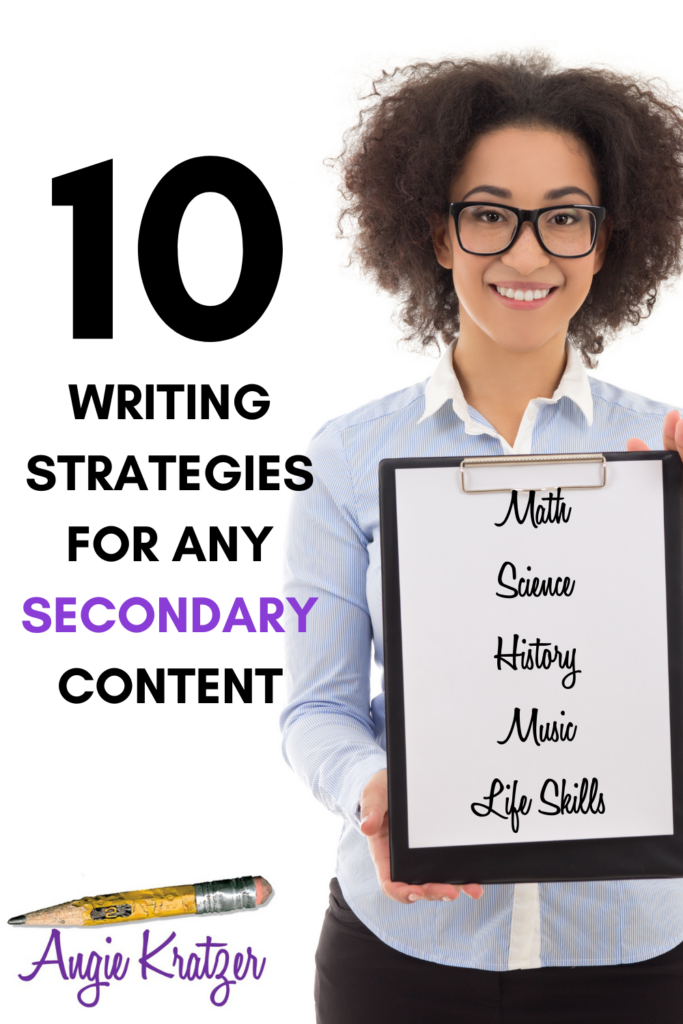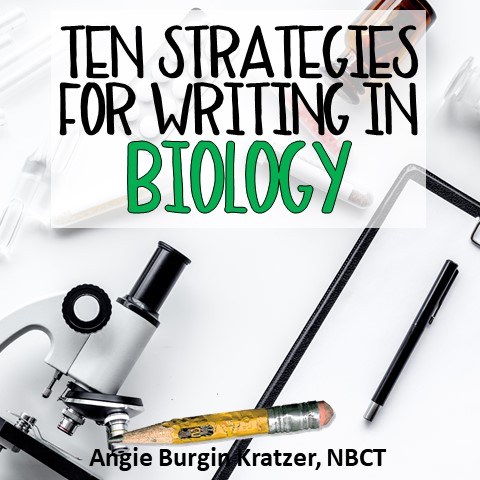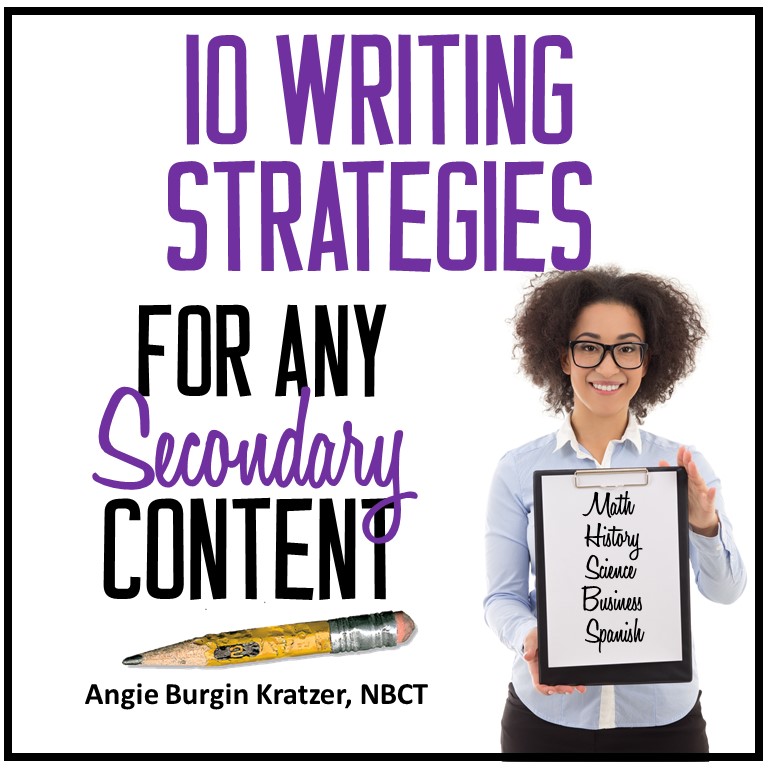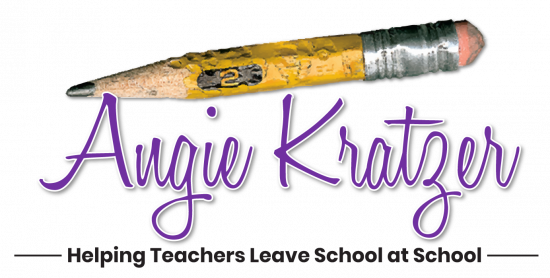
Your principal has told you that you need to bring writing into your instruction. And you teach math. Or masonry. Or art. Now it’s time to reach WAY back to your Writing in the Content Areas course from college . . . but wait. There was no Writing in the Content Areas course. Now what? Maybe you can drag out those five-paragraph essay notes from your high school English teacher. You’re dreading delivering those lessons as much as you hated being on the receiving end fifteen years ago.
Bringing writing into a lesson does not have to be torture. Done well, processing content through the written word can be a powerful way to solidify what students have learned. Writing makes it stick.
What the Research Says About Writing and the Brain
Several parts of the brain are associated with writing. The frontal lobe is party central, and that’s where reasoning and problem solving happen. The parietal lobe sends the invitation to the party. It interprets words and language. Here’s the science-y part: When a student physically writes, she is kicking into gear the reticular activating system, which processes information. The stimulation of that system in the brain stem tells the brain to put that information at the front of the line and focus on it.
Dr. Frances E. Jensen
During the teenage years, our brains are both more powerful and more vulnerable than at any other time of our lives. They’re powerful because teenagers and children have more synapses—connections between brain cells—than adults do. So teenagers are able to learn much more efficiently than adults, with less effort. That creates a huge opportunity—an optimal time window when teenagers can grow their cognitive strengths and work on their weaknesses.
Here’s the takeaway from my research: Writing activates the part of brain that makes the student focus on material. That focus makes a pathway for the brain to process, reason, and solve problems.
So maybe writing in the content areas of biology, choral music, and health can be more than an exercise in ticking all the administrator boxes; maybe it can be a worthwhile way to help students make connections and help teachers assess knowledge and skills.
Ten Fun Ideas for Pulling Writing into Any Content Area
- Biopoem:
A biopoem is a short, (usually) free verse poem that describes a subject. Each line is dedicated to a specific descriptor. There are several versions of the biopoem, and a teacher can add and delete what’s necessary. - Quick Write:
A quick write, also called a fluency exercise, is a timed “brain dump.”
It is not usually evaluated for sentence formation, usage, spelling, or
punctuation. Students might have two to four minutes to write about
a topic, and the only rule is that they cannot stop writing until the
teacher tells them to do so. - Found Poetry:
Found poetry is a general term used for a set of words, phrases, lines,
or ideas that were not originally intended to be poetry but turn out
that way. An interesting note left on the fridge might become found
poetry, or poetry might be “found” among the lines of prose. - Download Bell Ringer:
Students activate prior knowledge or demonstrate understanding
by “downloading” what they know at the start of a lesson. The
teacher differentiates and helps students own their knowledge
by offering a limited number of choices. - Board Book:
A board book is a simple text designed for a child. Students create
the book and, if possible, actually read it to a child. The purpose
is to help students connect with challenging material by breaking
it down in a way that creates an entry point for more rigorous
application. (Gotta tell you—This was one of my faves. We brought my son to class, and students read to him. Adorbs!) - Image Response:
In anticipation of new learning, students are asked to respond in
writing to an image that is displayed in some way via projection, a
hyperlink, or task cards. Students may be asked to predict what is
about to happen, describe what they think they are seeing, or
guess what caused the scene. It is important to choose an image
that is open to interpretation. Once students have finished
writing, they share their responses in pairs or small groups. The
teacher then introduces the lesson by giving the factual context of
the photograph. - Comic Strip:
Students create a comic strip or one-frame cartoon to explain a
process or function. They can create the comic strip in class or at
home. The benefit for other students is in the scoring of the work.
You might put students in a circle and rotate the art. Each student
has enough rubrics to evaluate all the comic strips, and the group
simply passes the students’ work around the circle. - Write a Rap!
Students write a rap, cheer, or poem to help them memorize content, show their knowledge about a particular topic, or demonstrate the steps of a skill or process. The teacher provides a list of elements the piece must contain, a format for publishing (performance, bulletin board, etc.), and a rubric for scoring. - Soap Opera Screenplay:
Students develop soap opera characters, write a screenplay for one scene or a series of short scenes, and perform for the class. Within the scenes, students must use information gathered through a formal research process. After the performances, each group turns in a page of citations in the format the teacher chooses. After the performances, each group turns in a page of citations in the format the teacher chooses. - Web Site Construction Project:
Students demonstrate their understanding of content by creating
a multiple page web site through Weebly, a free platform that
allows a teacher to maintain control of what is posted. The
teacher makes the final decision to go live on the Internet. This
strategy works best for content-heavy subjects like history and
social studies rather than skill-based subjects like math and
English.
WARNING: You might be tempted to use these strategies only as reinforcement. Resist! Many of these ideas would work as warm-ups or assessments. Get in front of your students whining about a test by offering the comic strip as an alternative. Need to have a culminating project for a large unit? The Web Site Construction Project is ideal.
How These Writing Ideas Came About

Several years ago, my school had a group of struggling sophomores who were placed together in one section of biology. At this small school, this group of 14 students stayed together all day, which meant that their teachers had a unique opportunity to collaborate and create cross-curricular connections. That semester, my principal asked me to design a creative writing elective that would draw content from the biology standards. Students had biology during second block and creative writing during fourth block. My job was to use my class to reinforce biology, and I had carte blanche to design the course the way I wanted.

After a lot of stumbling and small successes, the bio teacher and I took 100% of those students across the “passing” finish line. All 14 made a Level 3 or 4 on an exam that was required for graduation. At the end of that year, I gathered up all my lesson plans and created a set of exercises that any biology teacher could use. The process expanded to another resource, this one for ANY secondary content area. It is my hope that these two sets are helpful for teachers of every subject.
Sources:
Dingman, Marc, Ph.D. “Know Your Brain: Reticular Formation.” Neuroscientifcally Challenged. 25 July 2015. https://neuroscientificallychallenged.com/blog/know-your-brain-reticular-formation. “How Does Writing Affect Your Brain?” NeuroRelay. 7 Aug. 2013. http://neurorelay.com/2013/08/07/how-does-writing-affect-your-brain/.
Perkins-Gough, Deborah. “Secrets of the Teenage Brain: A Conversation with Frances E. Jensen.” ASCD. Oct. 2015. http://www.ascd.org/publications/educational-leadership/oct15/vol73/num02/Secrets-of-the-Teenage-Brain@-A-Conversation-with-Frances-E.-Jensen.aspx.

